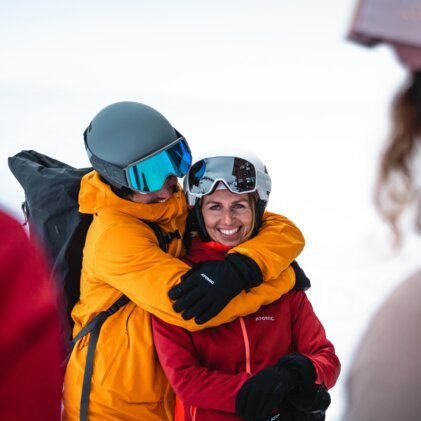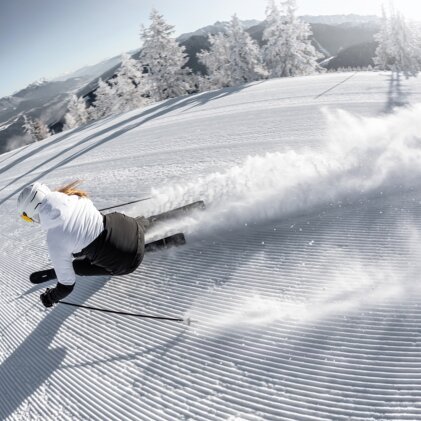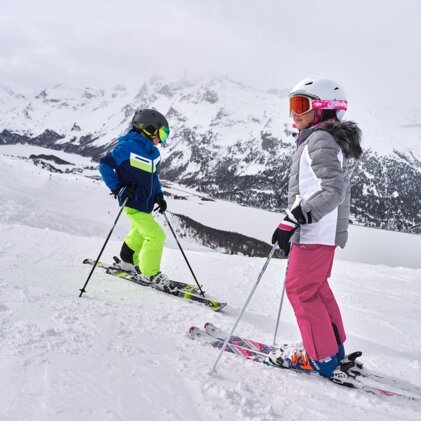Ski helmets for your head at INTERSPORT Rent
Whether you're a beginner or a pro, ski helmets have become an essential part of your winter equipment. But not all helmets are the same. The safety features vary from model to model - from innovative MIPS technology to practical extra features for use in the snow.
INTERSPORT Rent is happy to help you find the right ski helmet, because our motto is: Safe skiing - only with a helmet.
Whether with the most important facts on this page, or through personal advice in an INTERSPORT Rent-shop in over 800 countries worldwide: our winter sports experts, the RENTertainers, will show you the best accessories for men, women and children - to rent and test in the most beautiful ski resorts in the world!
How are ski helmets constructed?
A ski helmet is made up of two main parts that work together perfectly to provide optimum protection in the snow:
Inner shell
- made of EPS (expanded polystyrene) foam
- is used for damping
Outer shell
- made of carbon, hard plastic or fibreglass
- provides mechanical protection
A sophisticated ventilation system between the shells provides a pleasant climate, while removable padding increases the comfort of the accessories. For an optimal fit, modern helmets are equipped with an adjustable size system and a secure chin strap.
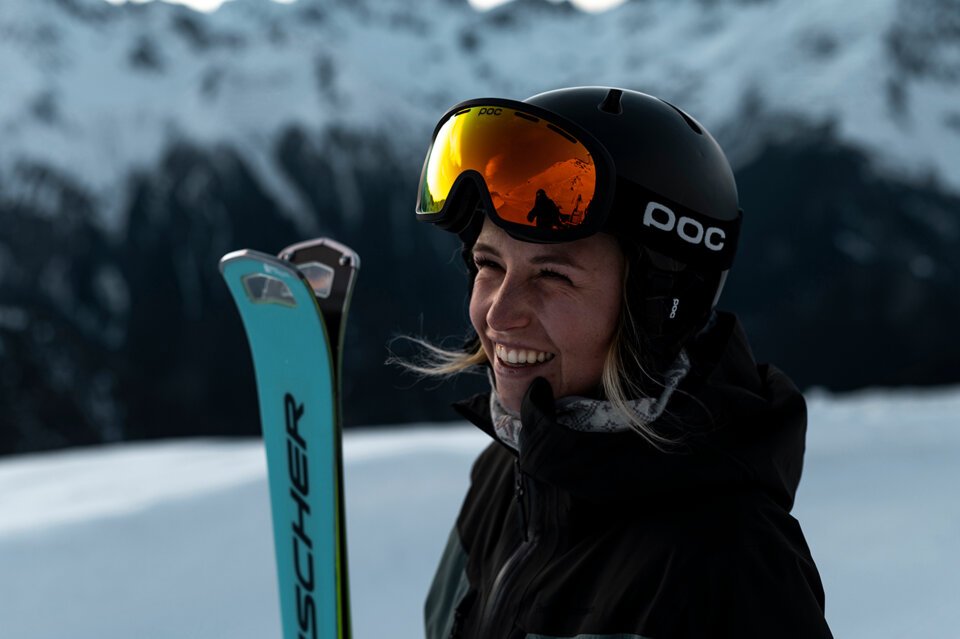
Types of ski helmets: The differences
Ski helmets come in a variety of designs, each offering different benefits. The main helmet types include
In-mold helmets:
- A thin outer shell is welded to a rigid foam inner shell
- Well ventilated, slightly lighter and perfect for sporty riders
- Slightly more expensive, but ideal for long days on the slopes
Hard shell helmets:
- A thicker outer shell is bonded to the inner shell
- Higher protection, especially for freeriders and ski tourers
- Tends to be heavier, but more durable
Half-shell helmets – Class B
- Cover the upper part of the head
- Often in combination with flexible ear pads
- High comfort and good
Full-shell helmets – Class A
- Covers the entire head, including the ears
- Even better protection, especially for fast riders
So if you want maximum safety in winter, look for class A products. MIPS helmets offer an additional layer of protection against dangerous rotational forces.
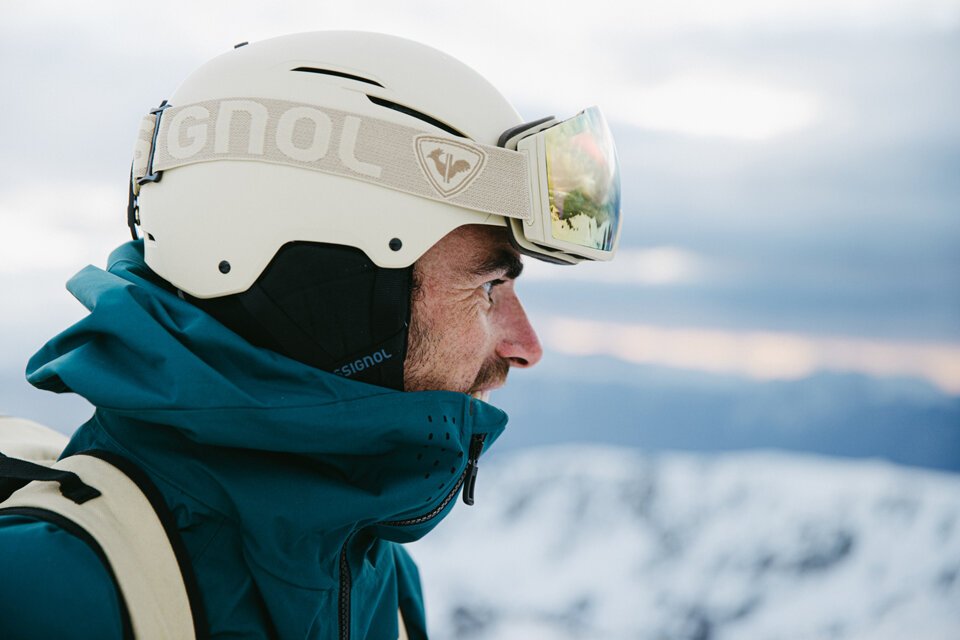
Your safety plus: MIPS or SPIN
Have you ever heard of the Multidirectional Impact Protection System - MIPS for short? This innovative safety technology for ski helmets is designed to reduce the rotational forces caused by an oblique impact to the head.
MIPS is an ingenious system that – to put it simply – reduces the risk of concussion by absorbing energy through the moving shells of the helmet. As additional protection, the MIPS system has already prevented many head injuries!
An alternative to MIPS is SPIN (Shearing Pad Inside). This technology from POC has the same goal as MIPS. It works in a similar way but uses specially designed silicone pads to absorb impact and minimise rotational movement.
Whether it’s MIPS or SPIN, if you want to be on the safe side, it's worth investing in a ski helmet with this crucial safety advantage, despite the higher price. Your health should always come first!
Ski helmets for men, women and children: The perfect fit
To find the right shape and size of ski helmet for you, take the following factors into account:
- Head circumference: A well-fitting helmet should be neither too tight nor too loose. Many models allow you to adjust the size.
- Needs: Additional features such as ventilation systems or MIPS technology can add comfort and safety.
- Riding style: There are different types of helmets depending on whether you are more comfortable on the slopes or action-packed in deep snow.
There are also differences in ski helmets depending on the target group:
- Ski helmets for women: Often narrower cut and available in more feminine designs.
- Ski helmets for men: Wider and more robust construction to provide more stability and protection.
- Children's helmets: Soft inner lining and additional protection mechanisms for added safety and comfort. For more detailed information, check out our blog post on children's ski helmets!

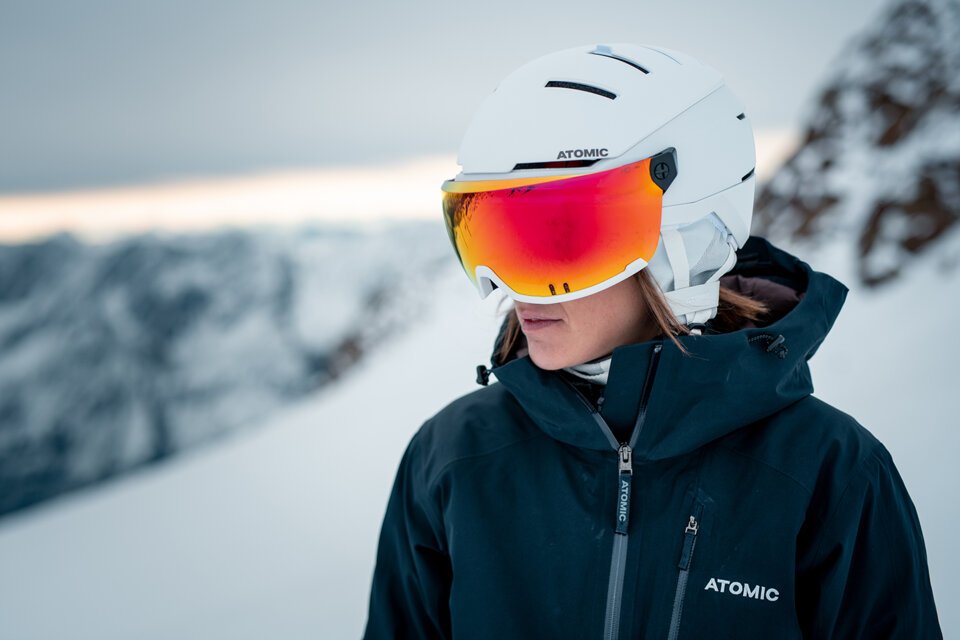
Ski helmets with or without a visor?
A flip-up visor or separate ski goggles – both variants have their specific advantages and disadvantages when skiing. Choosing one or the other is a matter of taste. Here is an overview of the advantages:
Ski helmet with visor
- Has a wider field of vision
- Fogs up less quickly
- Saves the extra cost of ski goggles
Combination of helmet without visor & ski goggles
- Specialised ski goggles generally offer better UV protection than visors.
- The lenses can be easily changed depending on the current weather conditions.
- Important: The ski goggles must be compatible with the helmet.
Ultimately, you should consider your personal needs and preferences when choosing between a visor and ski goggles. If you like to ski or snowboard in changing weather conditions, you may be better off with a separate pair of ski goggles, while occasional skiers or snowboarders will appreciate the practical all-in-one solution of a visor helmet.
Still not sure which option is right for you? Our RENTertainers will be happy to help you decide. Just pop into the INTERSPORT Rent shop of your choice and try on a ski helmet with a visor or ski goggles!
How to combine a ski goggle with a ski helmet
A day’s skiing without a ski goggle? Unthinkable! Because winter conditions on the mountain can change quickly. Thanks to UV protection, tinting, an adjustable strap and other special features, ski goggles protect your eyes. And with the right fit, you'll have a clear view on the slopes in all weathers!
Ski helmets for spectacle wearers
Do you wear glasses? Then the question of the best solution for your vision is particularly urgent. The advantage of a ski helmet with a visor is that you can wear your normal glasses underneath, without the need for additional ski goggles. The helmet should leave enough space between your face and the visor.
If you choose a helmet without a visor, you will need special ski goggles that can be worn over your normal glasses – also known as "OTG ski goggles" (Over The Glasses). These are specially designed for this purpose and offer enough space for your glasses.
Check out the blog post for tips on which ski helmet is compatible with your goggles, or visit an INTERSPORT Rent shop for a fitting with your own ski goggle to ensure optimum fit and comfort.
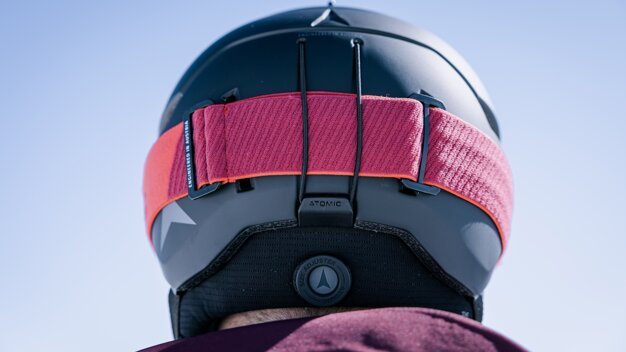
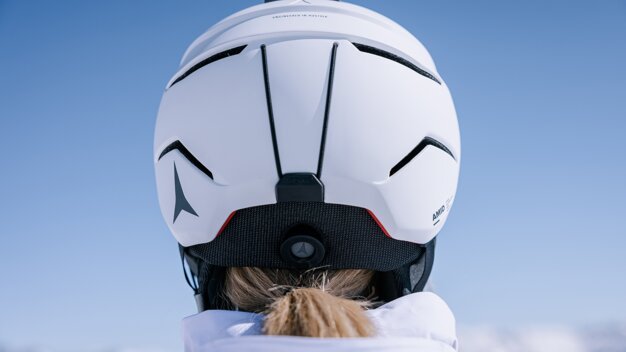
How to find the right ski helmet: 3 tips
Wearing the right ski helmet is essential for safe skiing and maximum protection on the slopes. Our three practical tips will help you find the right model for you.
1. Bring your ski goggles!
If you already have ski goggles and are looking for a ski helmet without a visor, be sure to bring the goggles with you to the fitting so that everything is coordinated in the end.
2. Measure your head circumference!
This will serve as a guide, especially if you are ordering online. Important: Place the tape measure over your eyebrows at the widest part of your head!
3. Know the tricks!
When trying on a helmet, we advise you to shake your head: Put it on, open the chin strap.
For more tips on choosing the right ski helmet, size and fit, click here ...
Expect to pay a price between € 100.00 and € 130.00 for a good ski helmet. Do not skimp on safety standards. The small but significant differences lie in the features such as the ventilation system, goggle holder, inner lining, chin strap and ear pads. So take your time when choosing a helmet and don't be afraid to test several models thoroughly – after all, you want a helmet that will keep you safe and comfortable for many miles on the slopes.
Ski helmets and equipment from INTERSPORT Rent
Whether women's, men's or children's ski helmets – only at INTERSPORT Rent can you try out a different model every day. With the help of our experts, you are sure to find the right protective equipment for your unforgettable adventures in the snow.
Frequently asked questions about ski helmets:
When should a ski helmet be replaced?
A ski helmet should be replaced after a hard fall or after 5 years at the latest, as the material loses its protective effect over time. Visible damage or a worn liner are also clear signs that the helmet needs to be replaced. However, it is also important to follow the manufacturer's instructions!
Should I wear a hat under my ski helmet?
No, wearing a hat underneath a ski helmet is not recommended, as it will compromise the helmet's optimal fit and reduce its protective effect. Modern helmets are already equipped with a warm lining and a sophisticated ventilation system.
How do you clean a ski helmet?
The outer shell can be cleaned with lukewarm water and mild soap, while the removable padding can usually be washed at 30 degrees (follow the manufacturer's instructions!). After cleaning, the helmet should be dried at room temperature and not on a radiator.
How much does a good ski helmet cost?
The price of a good quality ski helmet ranges from around € 100.00 to € 130.00, although branded models with additional features such as a visor or MIPS technology can cost € 200.00 or more. However, it is well worth investing in a good helmet for your own safety.
Is it compulsory to wear a ski helmet?
Helmet laws vary from country to country in the Alps: In Austria, for example, it is compulsory for children and young people up to the age of 15 to wear a helmet, while in Germany and France there is no legal requirement. In the Netherlands, there are no such regulations due to the lack of ski resorts. Regardless of the law, experts strongly recommend that skiers of all ages wear a helmet.





